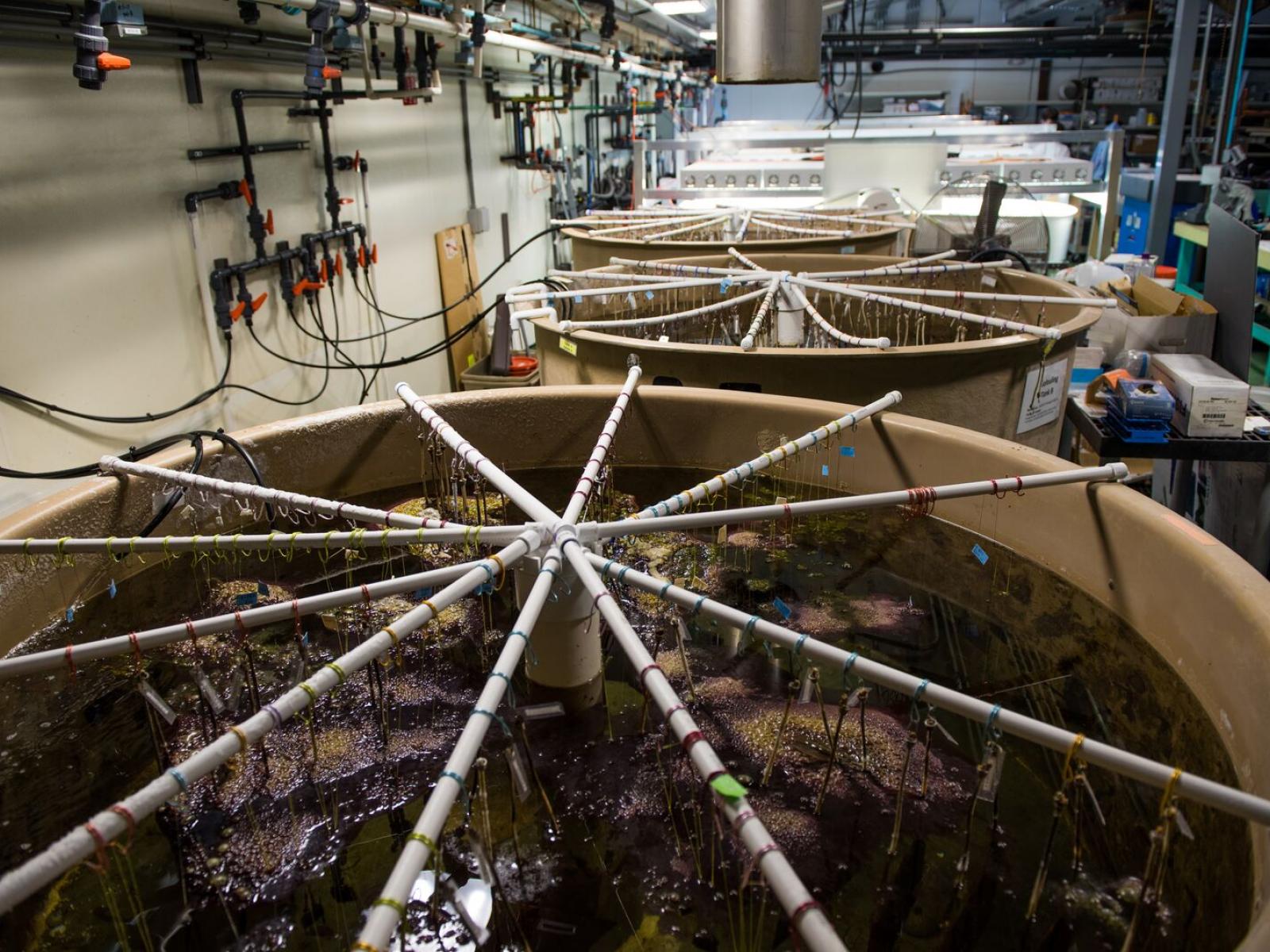Biofouling/Biocorrosion Mesocosms at PNNL-Sequim

At MCRL, researchers are revolutionizing how biofilms and biofouling are detected, monitored, and measured.
(Photo by Andrea Starr | Pacific Northwest National Laboratory)
Researchers at PNNL-Sequim are combining biology with materials science to revolutionize how biofilms and biofouling are detected, monitored, and measured.
PNNL-Sequim has two laboratories and a variety of instrumentation to support this research. The biotechnology laboratory is used for microbial biofilm profiling, genetic identification of fouling species, and characterization of biomolecular adhesives. The fouling laboratory is equipped for additional novel and accurate methods for quantifying biofouling and biocorrosion.
With open water and controlled low-flow and high-flow exposure systems, scientists can perform fundamental and applied research on how biofouling and biocorrosion processes initiate and evolve over time. Researchers also can independently test and evaluate materials and coatings. Scientists can test samples that transect the waterline, are fully submerged, transect bottom sediments, or are fully buried. We have experimental systems of multiple volumes, ranging from 0.5 L to 1,800 L tanks and flow chambers. These chambers can be exposed to normal day-night lighting or full darkness to mimic deeper-water conditions. In addition, we have a 12.8m length x 3.2m width x 1.2m height oval raceway with a center divider wall that is plumbed with unfiltered seawater and equipped with a variable speed motor system to provide dynamic control of water velocity. This tank allows for the simultaneous analysis of several hundred samples at the same time.
Other instruments include:
- A ramé-hart 590-U1, Model 590 Adv Automated Goniometer/Tensiometer to measure contact angles (assess hydrophobicity/oleophobicity) on coupons up to 25 cm x 25 cm.
- A Shimadzu model TOC-L CSH E100 with a TNM-L total nitrogen module and autosampler to rapidly analyze total carbon, organic carbon, and nitrogen from surfaces.
- A multi-angle LED illumination and digital imaging system to provide detailed photographic recording of surfaces.